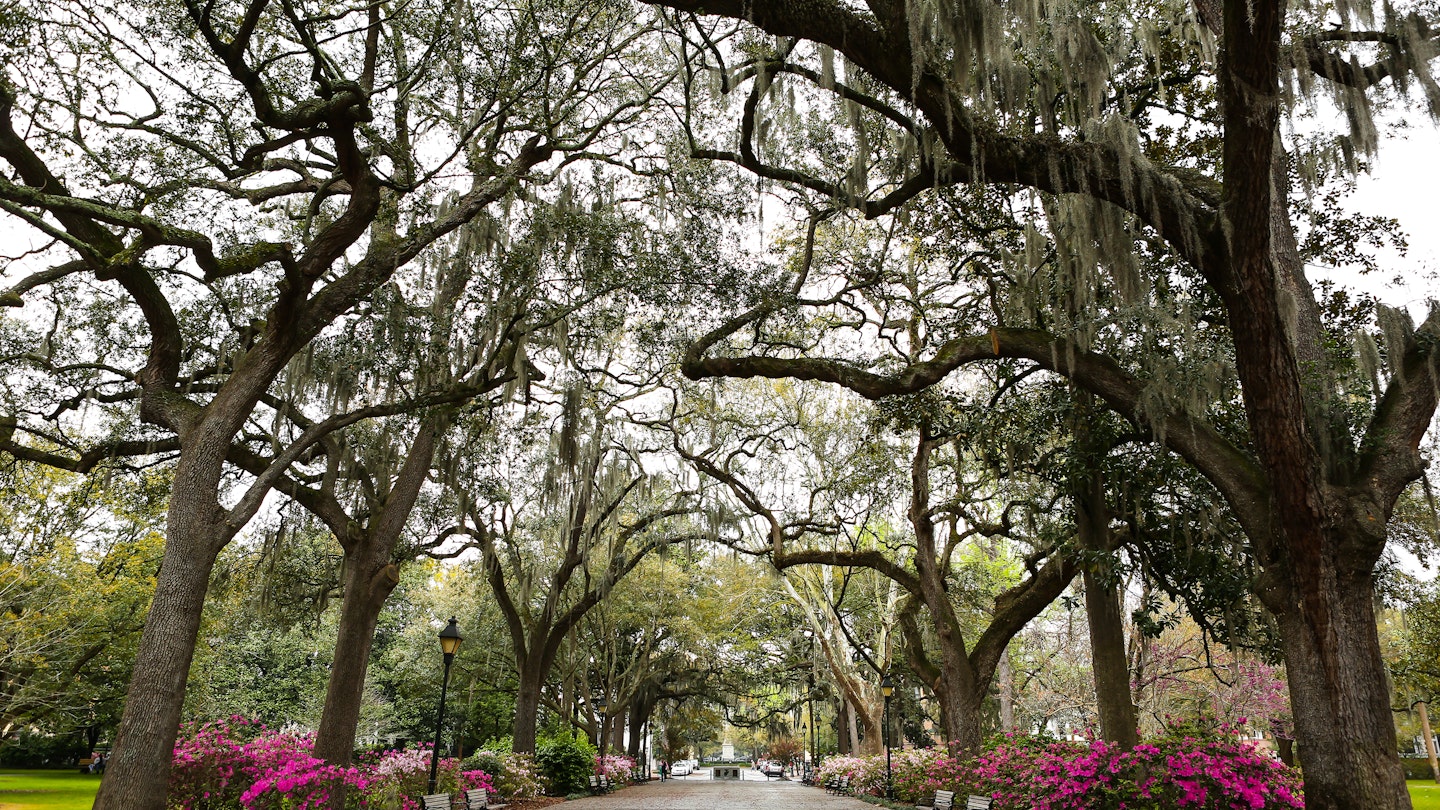Explore Savannah, Georgia: A Guide to Its Charm and History
There are few cities in the USA that are as beautiful as Savannah. When most people think of the South, they envision moonlight and magnolias – but in this gorgeously preserved city, the trope approaches something like the truth. It’s difficult to walk amidst the elegant rowhouses, spacious avenues, and green public squares of Savannah and not feel something stir deep in your being.
Familiarizing Yourself with Savannah
Before you arrive, it’s essential to familiarize yourself with historic Savannah’s iconic layout, first drawn up in 1733, known as the Oglethorpe Plan. Effectively, Savannah was designed around public squares, each bordered by four residential blocks for homes and four ‘trust’ blocks designated for churches, schools, and other civic institutions. Together, the public square and surrounding blocks form the city’s original wards.
The line between trust and residential areas has been porous for centuries, and some of the city’s most iconic homes occupy ‘trust’ space. Wards have been added to Savannah over the years, and newer parts of the city have moved away from the Oglethorpe Plan entirely; however, the areas most frequented by tourists still adhere to this layout.

The Walkable Charm of Savannah
The result is a town that feels simultaneously walkable and cozy yet airy and open; you don’t have to walk far to encounter a green space, all of which become impromptu parks for their surrounding wards. At night, many of Savannah’s squares seem to transform into photo backdrops for social media enthusiasts looking to expand their influence against the city’s lovely heritage architecture. Forysth Park, a 30-acre park anchored by an enormous fountain, is a large rectangle that, while not technically part of the ward system, is still well worth a wander.
Moreover, beyond Savannah’s iconic squares, you’ll also want to explore River Street, where old warehouses and annexes have been converted into smart boutique hotels that overlook the lazy, languid flow of the Savannah River.

Bonaventure Cemetery
For all of downtown Savannah’s aesthetic charms, consider beginning your exploration in a necropolis built for its departed residents. Located on bluffs overlooking the Wilmington River, Bonaventure formed a major set piece in the movie and book Midnight in the Garden of Good & Evil. The 100-acre plot is filled with generations of Savannahians, their graves shadowed by great oak trees dripping with Spanish moss. On the right humid evening, Bonaventure feels like the apotheosis of Southern Gothic, a space that is peaceful, nostalgic, and, in the right light, a little spooky.
Wormsloe Historic Site
Large plantations have become controversial tourist attractions in the South, and for good reason. Nevertheless, Wormsloe is still worth your time. That’s partly because the ‘big house’ associated with plantation sites is not the main attraction; rather, it plays second fiddle to colonial ruins, living history interpretive exhibits, and a series of nature trails through dark, lush woods. The entrance to the historic site features one of the grandest ‘driveways’ in the country: a 1.5-mile Avenue of the Oaks, framed by 400 stately trees trailing clouds of Spanish moss. The Avenue is one of the most photographed locations in the city, but photos truly cannot capture the magnitude of this thoroughfare.

Art and Culture
Savannah is rich in artistic heritage. The main theme of this vibrant city is art: it has always nurtured a robust creative streak, exemplified by the presence of the renowned Savannah College of Art & Design (SCAD), one of the nation’s premier art schools. SCAD boasts its own museum of art, showcasing a striking assemblage of glass, steel, and concrete, with interiors that highlight the work of SCAD students and alumni.
Nearby, the Jepson Center for the Arts illustrates that SCAD doesn’t have a monopoly on modern art or innovative architecture. The Jepson’s exterior was designed by the brilliant Moshe Safdi, and inside, visitors will find a wonderful collection of 20th and 21st-century art.
If you prefer to take a step back in time aesthetically, the Telfair Academy, housed in a charming honey-colored mansion in historic Savannah, offers a lovely collection of mainly 19th-century art sourced from both Europe and North America.
Discovering History
Moreover, Savannah feels like a living history museum, but there are also excellent history museums worth visiting. The small Ralph Mark Gilbert Civil Rights Museum details the African American fight for civil rights in Savannah, a city that faced harsh reactionary politics during the troubled days of Jim Crow. If you are a maritime enthusiast, the excellent Ships of the Sea Museum, packed with memorabilia from the naval age of sail and steam and featuring beautiful model boats, should not be missed. Lastly, the unique American Prohibition Museum is the only institution solely dedicated to telling the story of the country’s experiment with prohibition.





